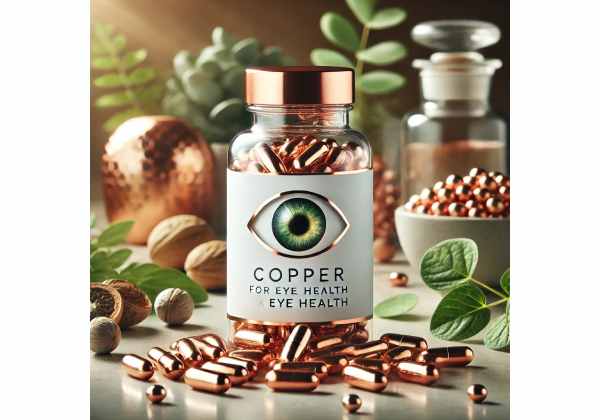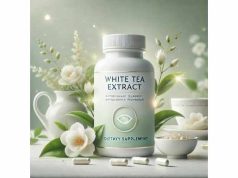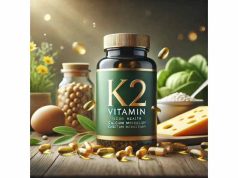
Copper is an essential trace mineral that plays a pivotal role in various biological processes, including those vital for preserving healthy eyesight. Although it often goes unnoticed next to more popular micronutrients like zinc or vitamin C, copper contributes to oxidative defense, neurological function, and tissue repair within the eye. In doing so, it can help reduce the risk of several vision issues and support clear, comfortable eyesight at every age. In this article, we’ll explore the science behind how copper improves vision, examine the best ways to incorporate this mineral, and outline the potential benefits for overall eye health.
Table of Contents
- What is Copper?
- How Copper Improves Vision
- Key Benefits of Copper for Eye Health
- How to Use Copper for Best Results
- Scientific Evidence and Research
- Frequently Asked Questions
- References and Sources
What is Copper?
Copper is a naturally occurring trace element integral to numerous enzymes and proteins in the human body. These enzymes and proteins, often termed “cuproenzymes,” participate in processes such as energy production, neurotransmitter synthesis, and iron metabolism. Though your body only requires small amounts of copper, it is essential for both overall well-being and eye-specific functions.
Copper’s Biological Role
- Enzymatic Functions: Copper atoms embed themselves into several enzymes, facilitating biochemical reactions that keep cells alive and functioning.
- Antioxidant Defense: Copper is a component of copper-zinc superoxide dismutase (CuZnSOD), an antioxidant enzyme that neutralizes harmful free radicals.
- Neurological Health: The mineral supports nerve conduction and myelin sheath formation, processes also tied to optimal visual signaling.
- Tissue Development: Copper is needed for collagen and elastin cross-linking, which influences ocular structures like the sclera and cornea.
Dietary Sources of Copper
Copper can be found in a variety of foods:
- Organ Meats: Liver, especially beef liver, is a top source.
- Shellfish: Oysters and other mollusks supply high copper concentrations.
- Nuts and Seeds: Cashews, sunflower seeds, and almonds are good plant-based options.
- Whole Grains: Wheat bran and other minimally processed grains.
- Legumes: Lentils, chickpeas, and beans, though in moderate amounts.
Most balanced diets offer sufficient copper to avoid severe deficiencies. However, for targeted ocular support, some individuals choose copper supplements or multivitamins with copper alongside other eye-friendly nutrients.
Common Forms of Copper Supplements
When copper is used as a supplement, it typically appears in one of these forms:
- Copper Gluconate: One of the more widely used varieties, easy for the body to absorb.
- Copper Sulfate: Often found in standard mineral complexes, though absorption can vary.
- Copper Amino Acid Chelates: Linked to amino acids to enhance bioavailability.
In eye-health formulations, copper usually accompanies other important micronutrients (such as zinc, vitamins C and E, and beta-carotene) to foster comprehensive ocular support.
Copper Deficiency and Eye Health
Although true copper deficiency is rare in well-nourished populations, low copper levels can disrupt antioxidant enzymes, collagen formation, and iron metabolism—potentially contributing to tissue damage and poor oxygenation of the retina. Ensuring an adequate intake of copper can thus help maintain balanced physiology crucial for eye function.
How Copper Improves Vision
Understanding how copper influences the eyes requires examining its involvement in the cellular activities and structural integrity essential for healthy vision. Copper Improves Vision through multiple pathways, each vital to different parts of the ocular system and their ability to function under varying conditions.
1. Antioxidant and Free Radical Scavenging
One of the most well-known copper-requiring enzymes is copper-zinc superoxide dismutase (CuZnSOD). This enzyme:
- Neutralizes Free Radicals: It converts superoxide radicals into less harmful molecules like oxygen and hydrogen peroxide.
- Protects Ocular Cells: By mitigating oxidative stress, CuZnSOD can protect the delicate retinal cells and lens proteins from damage that could precipitate cataract development or macular degeneration.
2. Collagen Cross-Linking and Tissue Strength
Ocular tissues, including the sclera and cornea, depend on robust collagen fibers. Copper-containing enzymes such as lysyl oxidase:
- Stabilize Collagen and Elastin: They help cross-link these proteins to fortify the sclera’s shape and the cornea’s transparency.
- Maintain Structural Integrity: If this cross-linking falters, the eye might become more susceptible to problems like myopia progression or corneal thinning.
3. Iron Metabolism and Eye Oxygenation
Copper is necessary for proper iron absorption and utilization:
- Hemoglobin Formation: Adequate copper ensures red blood cells can carry oxygen to eye tissues.
- Retinal Oxygen Supply: Oxygen is crucial for photoreceptor performance. Insufficient oxygenation, due to poor iron handling, may degrade visual acuity.
4. Neurological Support in the Visual Pathway
Vision also hinges on neural transmissions from the retina to the brain’s visual cortex. Copper plays a role in:
- Nerve Conduction: Certain enzymes dependent on copper help maintain myelin around neurons, ensuring signals travel efficiently.
- Neurotransmitter Synthesis: The presence of copper is relevant for generating dopamine, norepinephrine, and other neurotransmitters that can indirectly affect ocular function and coordination.
5. Immune Response and Inflammation Control
Chronic inflammation and immune disruptions often contribute to degenerative eye diseases:
- Modulating Inflammatory Cascades: Copper interacts with enzymes and proteins that modulate inflammatory signals, potentially helping reduce ocular inflammation.
- Cytokine Balance: Balanced copper levels may also keep cytokines in check, further safeguarding the retina and optic nerve from undue stress.
Each of these pathways supports the broader concept that copper is more than a peripheral mineral—it’s integral to sustaining the biochemical environment your eyes require for sharp, stable vision.
Key Benefits of Copper for Eye Health
When it comes to preserving and enhancing sight, copper provides a versatile range of benefits that help minimize both immediate eye strain and long-term tissue breakdown. Below are the core reasons many experts include copper among essential eye-friendly nutrients.
1. Defense Against Oxidative Stress
Excess free radicals can injure the lens, cornea, and retina. Copper’s antioxidant involvement helps mitigate oxidative harm:
- Reducing Cataract Risk: Antioxidant support delays the clumping of lens proteins that leads to cataracts.
- Macular Protection: Helps shield the macula from photic stress, especially when combined with other antioxidants like lutein or zeaxanthin.
2. Promoting Vascular and Circulatory Health
The retina’s high metabolic demand means stable blood flow is paramount. Copper’s role in iron metabolism and red blood cell formation fosters:
- Enhanced Nutrient Delivery: A well-oxygenated retina performs better, sustaining photoreceptor function.
- Lower Inflammation: Healthy circulation can buffer inflammatory processes that degrade delicate capillaries in the eye.
3. Strengthening Eye Structure
Collagen cross-linking enzymes reliant on copper keep the sclera and cornea resilient:
- Reducing Deformities: If the sclera remains robust, myopia progression might slow due to less elongation of the eyeball.
- Maintaining Corneal Clarity: Supports healing post-surgery or minor abrasions while preserving smooth, transparent corneal surfaces.
4. Boosting Recovery from Eye Strain
Prolonged digital device use or intense near work can strain ocular tissues. Adequate copper:
- Alleviates Muscle Fatigue: By supporting nerve function, ocular muscles controlling focus and alignment can stay efficient.
- Synergizes with Eye Exercises: Combined with consistent breaks and exercises, copper ensures the eyes have the resources for daily stress recovery.
5. Complementing Essential Nutrient Combos
Copper rarely works in isolation; it pairs effectively with:
- Zinc: Over-supplementation of zinc alone can disrupt copper levels, but a balanced ratio fosters synergy for robust vision.
- Vitamin C: Fuels collagen synthesis, working hand-in-hand with copper for structural stability.
- Other Antioxidants: Vitamins E, A, and selenium can enhance copper’s protective effects against free radicals.
6. Potential Role in Degenerative Eye Conditions
While no single nutrient can definitively prevent advanced age-related issues, strong copper status supports:
- Slower AMD Progression: AMD (Age-related Macular Degeneration) risk may be reduced when combined with a multifaceted diet and lifestyle.
- Stable Retinal Pigment Epithelium: The RPE layer is less prone to degenerative changes if oxidative and inflammatory stresses remain controlled.
Through these multifaceted benefits, Copper Vision Benefits extend from daily eye comfort to possible long-range protection, reinforcing the importance of maintaining optimal copper intake throughout life.
How to Use Copper for Best Results
Incorporating copper effectively into a routine requires balancing factors like dosage, dietary sources, and synergy with other nutrients. Below are practical suggestions on obtaining maximum ocular benefits from this pivotal trace mineral.
1. Determine Your Daily Requirements
The recommended dietary allowance (RDA) for copper in adults generally ranges from:
- 900 micrograms (mcg) per day: Most adults, including men and non-pregnant women.
- 1,000–1,300 mcg per day: Pregnant or breastfeeding women, who may require slightly more.
An upper tolerable intake level for adults hovers around 10,000 mcg (10 mg) per day, although consistent high doses are generally not advised without medical supervision.
2. Obtain Copper from Whole Foods
Before exploring supplementation, assess how much copper you’re already getting from food:
- Incorporate Nuts and Seeds: Snack on cashews, pistachios, or mix in sunflower seeds to daily salads.
- Cook with Organ Meats: Lean liver in your weekly menu significantly boosts copper intake.
- Enjoy Seafood: Oysters, crab, or shrimp occasionally can enhance copper status.
Balancing your meals ensures you receive not just copper but other eye-protective micronutrients like zinc, vitamin C, and B vitamins.
3. Choose a Balanced Supplement
If you prefer a supplement:
- Multivitamins: Many formulations contain copper within recommended ranges to offset other minerals, like zinc.
- Eye-Specific Complexes: Specialized ocular health supplements often include 1–2 mg of copper along with lutein, zeaxanthin, and vitamins.
- Standalone Copper: If bloodwork suggests deficiency or if you have a specific condition requiring more copper, a separate copper supplement (like copper gluconate) might be beneficial, under professional guidance.
4. Maintain Ideal Copper-Zinc Ratios
Zinc and copper can compete for absorption sites in the gut. Excessive zinc intake may deplete copper, leading to deficiency. Experts frequently suggest a ratio of about 10:1 or 15:1 in favor of zinc. Ensuring your daily intake respects this balance helps avoid deficiency or overshoot of either mineral.
5. Timing and Pairing
- With Meals: Many find taking copper along with meals improves absorption and reduces the possibility of digestive upset.
- Vitamin C Co-Supplementation: Copper often pairs with vitamin C to assist in collagen formation, beneficial for eye tissue integrity.
- Caution with Iron: High-dose iron supplementation can affect copper status, so monitoring total mineral intake is crucial for optimal results.
6. Monitor for Potential Interactions
Copper can interact with certain medications or conditions:
- Wilson’s Disease: A genetic disorder leading to copper accumulation. If diagnosed, consult a specialist before adjusting copper intake.
- Heavy Metal Competition: If you’re taking other minerals or detox formulas, ensure they don’t severely limit copper’s bioavailability.
By selectively combining dietary diligence, balanced supplementation, and awareness of synergy with other vitamins and minerals, you can harness Copper Eye Health advantages without overcomplicating your regimen.
Scientific Evidence and Research
Copper’s critical functions span multiple domains of human physiology, prompting scientists to investigate its specific impact on ocular health. Although research on direct copper supplementation for vision is still emerging, broader studies on its role in enzymatic function, antioxidant defense, and tissue integrity shed light on potential ocular benefits.
Ocular Tissue Studies
- Retinal Health: Animal experiments reveal that disruptions in copper availability can compromise the retina’s antioxidant systems, leaving photoreceptors more vulnerable to damage.
- Collagen Cross-Linking: Lab-based analyses confirm copper’s necessity for enzymes like lysyl oxidase, which helps maintain the structural framework in scleral and corneal tissues. Weak collagen cross-linking is often tied to myopia and corneal thinning.
Age-Related Eye Disease Studies
- AREDS (Age-Related Eye Disease Study): While this prominent study didn’t isolate copper alone, it included copper in a formula with zinc, antioxidants, and other nutrients. Participants receiving these combined nutrients experienced reduced progression of advanced AMD. Copper’s presence likely balanced the high zinc content and contributed to overall ocular support.
- Antioxidant Trials: Additional research indicates that copper-containing SOD (superoxide dismutase) can mitigate oxidative stress in the lens and retina, hinting at protective effects against conditions like cataracts.
Copper-Zinc Dynamics
- Balancing Mineral Supplements: Investigations consistently highlight the delicate interplay between zinc and copper absorption. Many ocular health supplements now incorporate copper, reflecting an understanding of how crucial it is to avoid copper depletion when supplementing with moderate or high-dose zinc.
Potential for Further Exploration
Current evidence supports the idea that adequate copper is indispensable for sustaining normal vision, yet gaps remain:
- Specific Dosage Impact: More human clinical studies focusing on copper’s direct effect on ocular metrics—like IOP, corneal thickness, or progression of degenerative eye diseases—could clarify optimal dosages.
- Long-Term Monitoring: Understanding how copper supplementation influences different populations—such as seniors or individuals prone to AMD—would help refine eye care protocols.
For now, the existing body of knowledge emphasizes that while copper alone isn’t a magic bullet, it is integral to a holistic nutritional approach for preserving and potentially improving vision.
Frequently Asked Questions
Does Copper improve vision naturally?
Yes. Copper Improves Vision by supporting antioxidant enzymes, collagen cross-linking, and blood oxygenation processes. When these functions are optimized, the retina and other eye tissues can better defend against oxidative stress, retain structural stability, and maintain healthy circulation for clear, comfortable eyesight.
How quickly will I notice the benefits of copper for my eyes?
Timelines vary. Some individuals experience subtle improvements in eye comfort or reduced dryness within a few weeks, while more significant changes in vision clarity or structural support may emerge after several months of consistent intake. A balanced diet plus additional minerals and antioxidants can help expedite noticeable results.
Should I take a standalone copper supplement?
It depends. Many multivitamins or eye-health complexes already include copper at safe, recommended levels. If blood tests confirm a deficiency or if you rely on high-dose zinc, a separate copper supplement may be beneficial. Always consult a healthcare professional to ensure balanced intake.
Are there any risks of taking too much copper?
Yes. Excess copper intake may lead to gastrointestinal discomfort, nausea, or liver strain. The tolerable upper limit for adults is around 10 mg per day. Long-term overconsumption can create imbalances and raise health concerns, so always adhere to recommended guidelines and consult a physician if uncertain.
Can copper help with age-related macular degeneration (AMD)?
Copper is part of the AREDS-based nutrient formulations, which have been linked to slower AMD progression. While not a standalone cure, copper works synergistically with zinc and other antioxidants to bolster visual defense mechanisms. A doctor can provide guidance on comprehensive AMD management strategies.
References and Sources
- The American Journal of Clinical Nutrition – Provides extensive data on copper’s role in human health, including recommended daily allowances and the importance of balanced mineral intake.
- Investigative Ophthalmology & Visual Science – Features studies exploring the influence of copper-containing enzymes on retinal health and the protective effects of antioxidants in ocular tissues.
- Archives of Ophthalmology – Documents the AREDS (Age-Related Eye Disease Study) results, highlighting the synergy of copper with zinc and antioxidants to mitigate AMD progression.
- Nutrients – Publishes research on the interplay between essential trace minerals, such as copper, and overall metabolic processes that keep the eyes functioning optimally.
- Biological Trace Element Research – Contains in-depth articles examining copper’s involvement in enzymatic pathways, including superoxide dismutase, which is crucial for combating oxidative stress in the eye.
Disclaimer:
This article serves educational purposes only and should not replace professional medical advice or diagnosis. If you have concerns about your eye health or mineral levels, consult a qualified healthcare provider for personalized recommendations.
We encourage you to share this piece on Facebook, X (formerly Twitter), or your favorite social media platform. Spread the word on how proper copper intake can boost vision support, and follow us online for more updates on natural eye care strategies!










